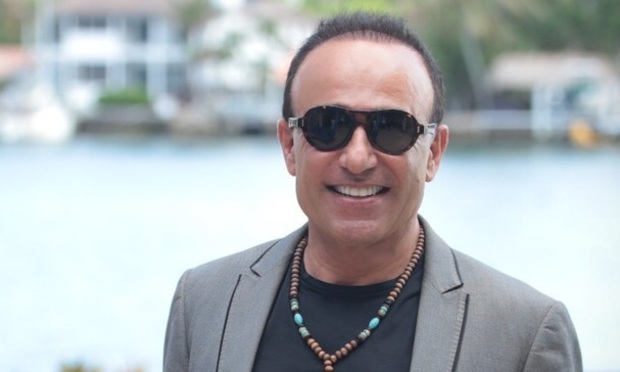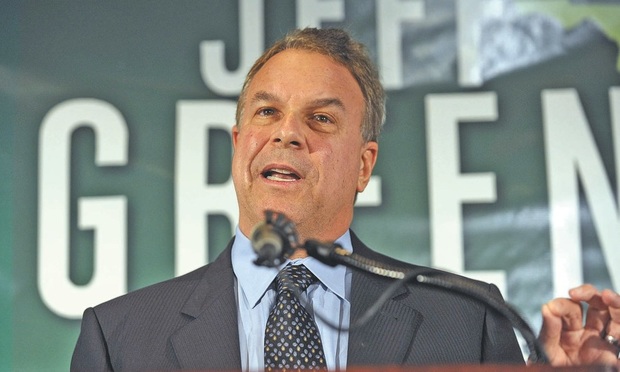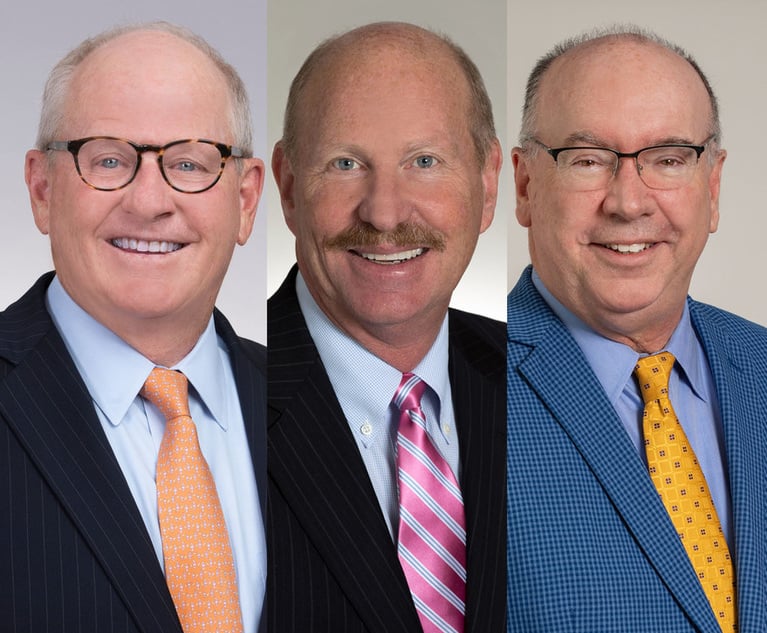The Mana-Greene Effect: Big-Name Developers Not Moving on Downtown Properties
Wynwood developer Moishe Mana has bought nearly 50 properties in Miami's Central Business District but has announced no project timeline. Billionaire Jeff Greene got approval for an office tower in downtown West Palm Beach but hasn't broken ground. Are they affecting urban core growth?
October 29, 2018 at 06:00 AM
8 minute read
 Moishe Mana. Courtesy photo
Moishe Mana. Courtesy photo
South Florida downtowns are on the cusp of growth that's put them on the map as major urban centers — yet two big-name developers have opted to sit on their downtown properties.
Moishe Mana, the Israeli-born entrepreneur best known as being one of the Wynwood redevelopment pioneers, has invested more than $301 million buying about 51 properties in Miami's Central Business District, but signs of his planned mixed-use project are yet to be seen. The exception is a recent announcement from his brokers that Mana's looking for Blockchain or other tech companies to lease six floors of offices at 100 E. Flagler St.
In downtown West Palm Beach, Jeff Greene, the unsuccessful Democratic gubernatorial candidate this year, hasn't moved on his project, the 30-story One West Palm office tower at 550 Quadrille Blvd., despite reportedly getting city approval more than two years ago.
 Jeff Greene. Photo: AP
Jeff Greene. Photo: APAre the two big-name developers in turn then putting the brakes on downtown redevelopment? The answer depends on whom you ask.
A Boca Raton real estate attorney said yes.
 Andrew Blasi.
Andrew Blasi.“It certainly slows down the development,” said Andrew Blasi, shareholder at Shapiro, Blasi, Wasserman & Hermann in Boca Raton. “I guess the reality is anybody is free to go buy land speculatively and land bank it. But of course if you get big developers going out and buying land speculatively and land banking it, it does nothing for the community redevelopment.”
Part of it, Blasi added, is the name recognition and celebrity-like status Greene has in Palm Beach County.
“Jeff is a very well-known, very highly regarded and a very prominent local figure,” Blasi said. “When people have that kind of prominence and celebrity, their name on things, certainly it forces people to notice more so than some(one) unknown. Certainly a developer with that kind of celebrity could move the needle perhaps more so that someone who is not that well-known.”
Mana and Greene didn't return requests for comment on the status of their projects, why they haven't developed and Blasi's assertions. When a reporter reached Greene by phone and explained the premise of the article, he said he's working on multiple projects and then asked questions be emailed to him, but he didn't reply with answers by the time this article went to press.
In August, shortly before the primary election Greene lost, he told The Palm Beach Post that he won't move on with One West Palm in part because the city approved the Okeechobee Business District for a part of downtown. The district allows buildings as tall as 25 stories in an area previously limited to five stories.
“As long as the city has an uncertain zoning climate, and thinks nothing of changing the zoning of a five-story building to 25 stories, most developers will be uncomfortable investing enormous amounts of capital,” Greene told the Post at the time. “Developers have to know what the rules are.”
As for Mana, his holdings are along and near Flagler Street, which was the main downtown drag during the neighborhood's heyday in the 1920s, and as such he might aptly name his project Flagler Village, said Mika Mattingly, who has brokered the majority of Mana's acquisitions there.
Mana's holdings aren't contiguous, but they are within walking distance from each other and will be redeveloped with an eye toward creating a walkable community, Mattingly, co-leader of the South Florida urban core division at Colliers International, has said.
His purchases include: The 10,949-square-foot, two-story building at 100 S. Miami Ave.; the 9,000-square-foot, two-story White Building at 201 E. Flagler St.; at least 25,624 square feet of offices at 100 E. Flagler St.; the 172,475-square-foot Biscayne Building at 19 W. Flagler St.; and the 27,078 -square-foot building at 55 NE First St.
“It's really just a waiting game. For him timing is everything, and he is prepared for that moment,” Mattingly said. “But I don't have a definite date.”
OTHER VIEWS
Not everyone agreed with Blasi's assertion that Mana and Greene are slowing the pace of downtown growth.
 Joseph Hernandez.
Joseph Hernandez.When it comes to Miami's Central Business District, Mana isn't driving the market there, attorney Joseph Hernandez said.
“Since Mana has started accumulating properties in those areas, the market has moved up and down,” said Hernandez, a Weiss Serota Helfman Cole & Bierman member and real estate practice group chair in Coral Gables. “The market two years ago was very high and large parcels downtown were really, really going at a large premium. That softened. I don't think that softened because of Mana or because of his lack of activity. I think that's just a general perception in the market that things were very hot and things kind of cooled down.”
 Jesse Saginor.
Jesse Saginor.Indeed, a slowdown in the market in either of the downtowns could be the result of economic forces bigger than Mana and Greene, said Jesse Saginor, associate professor of urban and regional planning at Florida Atlantic University's School of Urban and Regional Planning in Boca Raton.
Saginor took a midway position between Blasi and Hernandez saying it's unclear if Mana and Greene are impacting the redevelopment pace.
Either way, there could be other ripple effects of Mana's dormant downtown holdings, Saginor said. Other developers might be buying property near his holdings in hopes that his project, once finished, will bring more foot traffic to the area. Or, the developers might hope that Mana needs their property, and they eventually can sell it to him for a higher price, Saginor said.
Saginor also reasoned that developers generally have a lot to do before moving on with a project, including market analyses, re-zonings, securing financing and, for multi-phased projects, deciding which phase to build first.
“Developers,” he said, “have instincts.”
DOWNTOWNS STILL GROWING
Despite Mana's many inactive properties, Miami's Central Business District hasn't been dormant.
The area — roughly from Interstate 95 east to Biscayne Bay and from the Miami River north to Northeast Fifth Street, although the northern boundary in places extends to Eighth Street — saw other developers scoop up long closed, abandoned buildings with plans to re-open them.
Stambul USA, the Miami-based construction and development firm, wants to open a high-end retail, dining and entertainment center at the historic Walgreens building at 200 E. Flagler St. Stambul bought the 50,000-square-foot building, which once was the first Walgreens to open in Florida, for $19.75 million this summer.
Four years ago, it bought the Old U.S. Post Office and Courthouse on the northwest corner of Northeast First Street and First Avenue and has planned on beer maker Biscayne Bay Brewing to be a tenant.
Also, New York investor Yair Levy made his South Florida real estate debut this year, buying Metro Mall, 1 NE First St., for $14.5 million with plans to re-open it as a jewelry center.
“It's just these three massive buildings that are finally going to have a life pumping through them again,” Mattingly said.
She expects the Central Business District would have a new look by summer 2019 given all the recent activity, even excluding Mana's acquisitions.
In downtown West Palm Beach, several projects are underway or finished. Perhaps most notable is developer Navarro Lowery's $145 million mixed-use project rising on the site where City Hall once was at 200 Second St. The hotel, apartments and waterfront restaurants are expected to be completed in 2019.
Downtown West Palm Beach, like Miami and Fort Lauderdale downtowns, also recently became home to a station for the Brightline passenger trains connecting the South Florida urban cores. In downtown West Palm Beach, the station came with the 290-unit Park Line Beaches apartment building at 591 Evernia St.
Just south of it, The Related Cos. wants to build the 297,000-square-foot 360 Rosemary office building.
If Greene were to build his project, this would prompt even more much-needed downtown West Palm Beach growth, said Blasi, the attorney who also sees growth there as lagging behind that of the downtowns in Miami and Fort Lauderdale.
“Development,” Blasi said, “begets more development.”
This content has been archived. It is available through our partners, LexisNexis® and Bloomberg Law.
To view this content, please continue to their sites.
Not a Lexis Subscriber?
Subscribe Now
Not a Bloomberg Law Subscriber?
Subscribe Now
NOT FOR REPRINT
© 2025 ALM Global, LLC, All Rights Reserved. Request academic re-use from www.copyright.com. All other uses, submit a request to [email protected]. For more information visit Asset & Logo Licensing.
You Might Like
View All
Fowler White Burnett Opens Jacksonville Office Focused on Transportation Practice
3 minute read
How Much Coverage Do You Really Have? Valuation and Loss Settlement Provisions in Commercial Property Policies
10 minute read
The Importance of 'Speaking Up' Regarding Lease Renewal Deadlines for Commercial Tenants and Landlords
6 minute read
Meet the Attorneys—and Little Known Law—Behind $20M Miami Dispute
Trending Stories
- 1Florida Judge Tosses Antitrust Case Over Yacht Broker Commissions
- 2Critical Mass With Law.com’s Amanda Bronstad: LA Judge Orders Edison to Preserve Wildfire Evidence, Is Kline & Specter Fight With Thomas Bosworth Finally Over?
- 3What Businesses Need to Know About Anticipated FTC Leadership Changes
- 4Federal Court Considers Blurry Lines Between Artist's Consultant and Business Manager
- 5US Judge Cannon Blocks DOJ From Releasing Final Report in Trump Documents Probe
Who Got The Work
J. Brugh Lower of Gibbons has entered an appearance for industrial equipment supplier Devco Corporation in a pending trademark infringement lawsuit. The suit, accusing the defendant of selling knock-off Graco products, was filed Dec. 18 in New Jersey District Court by Rivkin Radler on behalf of Graco Inc. and Graco Minnesota. The case, assigned to U.S. District Judge Zahid N. Quraishi, is 3:24-cv-11294, Graco Inc. et al v. Devco Corporation.
Who Got The Work
Rebecca Maller-Stein and Kent A. Yalowitz of Arnold & Porter Kaye Scholer have entered their appearances for Hanaco Venture Capital and its executives, Lior Prosor and David Frankel, in a pending securities lawsuit. The action, filed on Dec. 24 in New York Southern District Court by Zell, Aron & Co. on behalf of Goldeneye Advisors, accuses the defendants of negligently and fraudulently managing the plaintiff's $1 million investment. The case, assigned to U.S. District Judge Vernon S. Broderick, is 1:24-cv-09918, Goldeneye Advisors, LLC v. Hanaco Venture Capital, Ltd. et al.
Who Got The Work
Attorneys from A&O Shearman has stepped in as defense counsel for Toronto-Dominion Bank and other defendants in a pending securities class action. The suit, filed Dec. 11 in New York Southern District Court by Bleichmar Fonti & Auld, accuses the defendants of concealing the bank's 'pervasive' deficiencies in regards to its compliance with the Bank Secrecy Act and the quality of its anti-money laundering controls. The case, assigned to U.S. District Judge Arun Subramanian, is 1:24-cv-09445, Gonzalez v. The Toronto-Dominion Bank et al.
Who Got The Work
Crown Castle International, a Pennsylvania company providing shared communications infrastructure, has turned to Luke D. Wolf of Gordon Rees Scully Mansukhani to fend off a pending breach-of-contract lawsuit. The court action, filed Nov. 25 in Michigan Eastern District Court by Hooper Hathaway PC on behalf of The Town Residences LLC, accuses Crown Castle of failing to transfer approximately $30,000 in utility payments from T-Mobile in breach of a roof-top lease and assignment agreement. The case, assigned to U.S. District Judge Susan K. Declercq, is 2:24-cv-13131, The Town Residences LLC v. T-Mobile US, Inc. et al.
Who Got The Work
Wilfred P. Coronato and Daniel M. Schwartz of McCarter & English have stepped in as defense counsel to Electrolux Home Products Inc. in a pending product liability lawsuit. The court action, filed Nov. 26 in New York Eastern District Court by Poulos Lopiccolo PC and Nagel Rice LLP on behalf of David Stern, alleges that the defendant's refrigerators’ drawers and shelving repeatedly break and fall apart within months after purchase. The case, assigned to U.S. District Judge Joan M. Azrack, is 2:24-cv-08204, Stern v. Electrolux Home Products, Inc.
Featured Firms
Law Offices of Gary Martin Hays & Associates, P.C.
(470) 294-1674
Law Offices of Mark E. Salomone
(857) 444-6468
Smith & Hassler
(713) 739-1250






